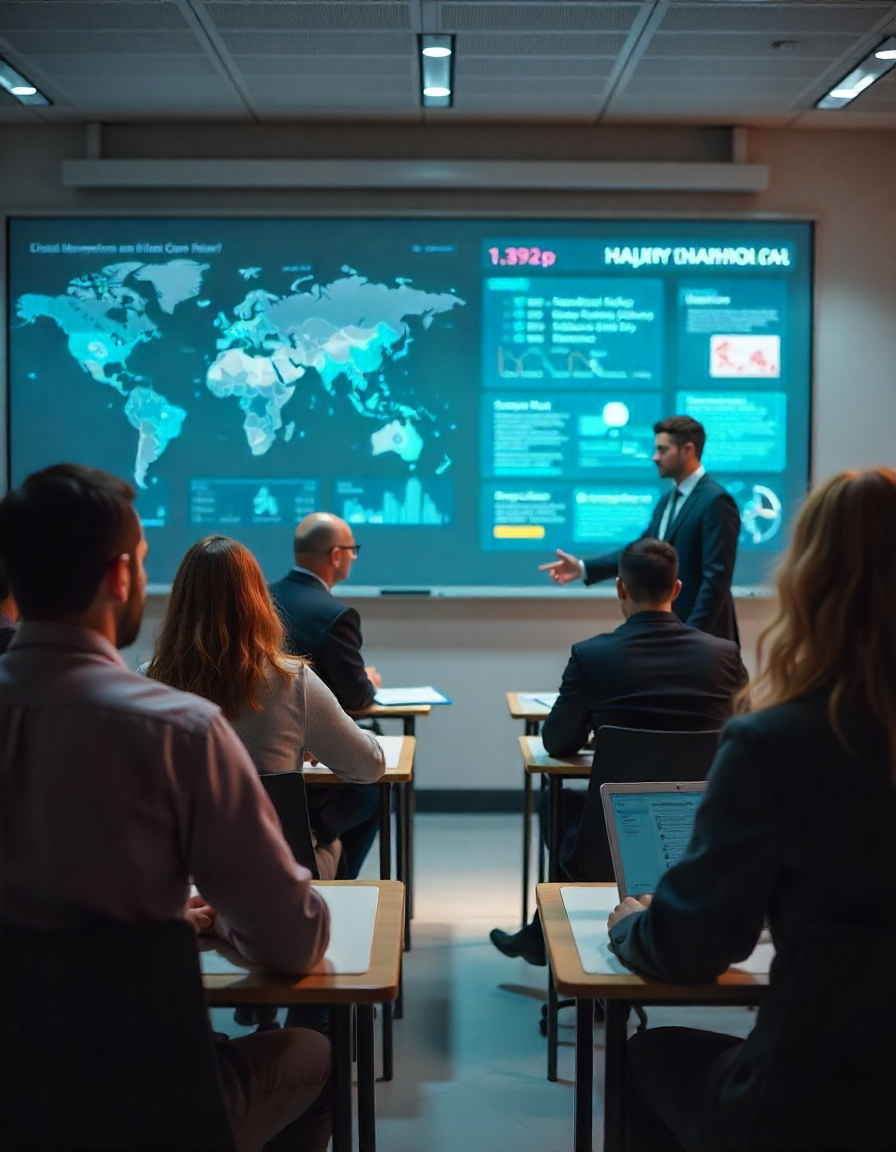Artificial Intelligence (AI) is rapidly transforming industries, redefining how we work, interact, and innovate in 2025. From groundbreaking advancements in machine learning to ethical considerations and real-world applications, AI is setting the foundation for a tech-driven future. This article explores the top AI trends shaping 2025 and their implications for businesses, professionals, and society as a whole.
1. AI-Powered Hyperautomation
Hyperautomation, the integration of AI to automate and optimize complex processes, is gaining significant momentum.
How It Works
AI-driven tools such as robotic process automation (RPA), natural language processing (NLP), and machine learning (ML) are automating repetitive tasks across industries, from manufacturing to customer service.
Key Example
Enterprises are utilizing hyperautomation to manage supply chains. By analyzing real-time data, AI predicts demand fluctuations and prevents bottlenecks, saving costs and time.
Why It Matters
By streamlining efficiency and reducing errors, hyperautomation empowers businesses to scale operations while reallocating human resources to high-value tasks.
2. Generative AI Reshapes Creativity
Generative AI continues to redefine content creation, enabling unprecedented levels of productivity and innovation.
Applications in 2025
- Generative design in sectors like architecture and fashion transforms conceptual ideas into prototypes within hours.
- Marketing teams use AI for ad copy creation, video editing, and graphic design without compromising quality.
- Developers rely on AI-powered coding assistants to accelerate software production.
A Groundbreaking Example
Generative AI tools produce photorealistic digital twins for industries such as real estate and retail, enabling more immersive customer experiences.
The Challenge
While generative AI offers immense possibilities, ensuring transparency and addressing intellectual property rights remain critical hurdles.
3. AI Advances in Healthcare
The healthcare sector is leveraging AI to enhance patient care, diagnostics, and operational efficiency.
Diagnostic Breakthroughs
AI models trained on datasets of medical images are achieving unparalleled accuracy in identifying diseases such as cancer or heart conditions at earlier stages.
Personalized Patient Care
AI algorithms analyze patient history and genetic data to recommend individualized treatment plans, improving outcomes while reducing unnecessary interventions.
Automation of Administrative Operations
Hospitals are adopting AI solutions for appointment scheduling, medical coding, and billing to decrease administrative burdens and improve patient experience.
Ethical Considerations
The use of AI in healthcare raises questions about patient privacy and potential biases in algorithms that influence medical decisions.
4. Ethical AI Gains Prominence
With AI advancing at a rapid pace, ethical considerations are taking center stage in 2025.
Core Ethical Concerns
- Bias Reduction: Developers are prioritizing efforts to eliminate biases in AI models that lead to unfair outcomes.
- Transparency: Policy advocates demand “explainable AI” to ensure users understand how decisions are made.
- Accountability: Policymakers are pressing for robust frameworks to assign accountability when AI systems fail.
Regulatory Trends
Governments worldwide are implementing stricter AI regulations to safeguard consumer data and prevent misuse. For instance, the European Union’s AI Act is setting benchmarks for ethical AI deployment.
5. AI Integration in the Workplace
AI systems are empowering workforces by enhancing productivity and automating menial tasks, leading to a hybrid evolution of human-machine collaboration.
Transformative Workplace Applications
- AI-Assisted Recruiting: AI tools analyze resumes and filter candidates, ensuring employers find talent efficiently.
- Performance Analytics: AI evaluates team productivity, identifies skill gaps, and recommends training programs.
- Employee Support: Virtual assistants and chatbots answer routine employee queries, facilitating HR operations.
Upskilling Imperatives
Organizations are investing in AI-focused training programs to enable employees to work alongside intelligent systems effectively.
6. Edge AI Expands Reach
Edge AI, which processes data locally on devices rather than cloud servers, is taking center stage in 2025.
Key Benefits
- Reduced Latency: Immediate processing leads to faster response times.
- Enhanced Privacy: Data remains localized, reducing exposure to cybersecurity risks.
- Energy Efficiency: Minimal reliance on cloud infrastructure cuts energy costs.
Everyday Applications
- Autonomous vehicles powered by edge AI enable real-time decision-making critical to safety.
- Smart home devices leverage edge AI to predict user needs without constant internet connectivity.
7. AI in Climate Action
AI is playing a pivotal role in combating environmental challenges.
Green Innovations
- Energy Optimization: AI tools optimize renewable energy systems by improving battery storage and predicting energy usage spikes.
- Deforestation Monitoring: AI-equipped drones monitor forest health and illegal logging in remote areas.
- Sustainable Farming: AI-driven precision agriculture enhances crop yields by predicting weather patterns and pest behaviors.
Environmental Challenges Solved
AI solutions help identify actionable insights to meet global sustainability goals, such as reducing carbon emissions and conserving biodiversity.
8. AI and Cybersecurity
With the rise of sophisticated cyberattacks in 2025, organizations are leveraging AI to safeguard digital assets and prevent data breaches.
Enhanced Threat Detection
AI-powered cybersecurity systems identify vulnerabilities in real-time, blocking attack attempts before they escalate.
Adaptive Security Measures
ML models continuously learn from new threats and adapt defenses accordingly, offering proactive protection.
Countermeasures for AI Exploitation
The emergence of adversarial AI—where malicious actors manipulate machine learning models—has prompted cybersecurity teams to develop counter-strategies.
9. AI’s Industry-Specific Impacts
Retail
AI is revolutionizing retail with hyper-personalized shopping experiences. From chatbots assisting shoppers to dynamic pricing models, businesses are creating customer-centric models that drive sales.
Education
Educators use AI for smart learning platforms that adapt lesson plans to individual progress metrics, fostering better educational outcomes.
Automotive
Beyond self-driving potentials, AI enhances features such as predictive maintenance, ensuring vehicles operate smoothly and sustainably.
10. The Collaborative AI Future
AI is not replacing humans—it is fostering collaboration to achieve shared objectives. Innovations in collaborative AI are ensuring systems enhance human creativity, problem-solving, and decision-making.
Human-and-AI Collaboration in Action
- Designers use AI insights to craft visually compelling marketing campaigns.
- Scientists rely on AI to accelerate research in areas like pharmaceutical development.
The Human Element
Organizations emphasize retaining the human touch in customer service, aligning automated interactions with empathy-driven responses when necessary.
Final Thoughts
2025 is a pivotal year for Artificial Intelligence. The trends highlighted above demonstrate how AI is pushing technological and operational boundaries while addressing critical ethical and societal questions. By staying informed and leveraging the latest AI innovations, businesses and individuals can capitalize on these advancements to drive growth and opportunities in the coming years. The future is unfolding now, powered by intelligent systems leading us to smarter, more efficient solutions.




